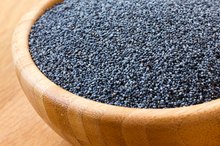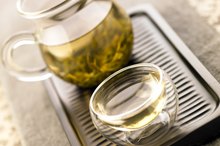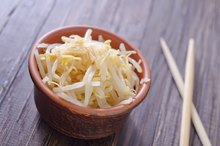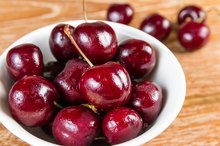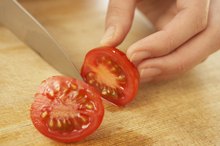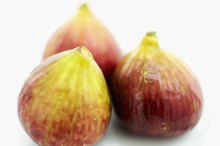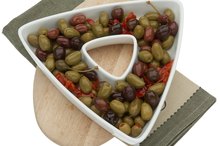List of Foods High in Phenols
Eating a balanced and healthful diet not only provides the essential nutrients, it also supplies other nutrients that, while not critical for survival, promote good health. Phenols, a family of antioxidants that prevent tissue damage, belong to this group. Chances are if you're following a healthful diet you already eat lots of phenol-containing foods, but reaching for foods that are especially rich in phenols can give you a boost. However, if you're sensitive to or intolerant of phenols, you should avoid phenol-rich foods.
Spice It Up
Feel free to load up on herbs and spices in your cooking; not only are these seasonings low in fat and calories, they're also among the richest sources of phenols, according to a study published in the "European Journal of Clinical Nutrition" in 2010. Cloves, peppermint and star anise rank as the top three phenol-rich foods by weight, reports the study, and several other herbs -- including oregano, rosemary, sage and thyme -- also come packed with phenols. Add herbs and spices to soups, dressings and pasta; mix in fresh herbs with your salad greens; or steep fresh herbs in water for a naturally flavored drink.
Reach for Fruits and Veggies
Spices High in Purines
Learn More
Low in calories, packed with fiber and bursting with essential nutrients, fruits and vegetables should already make up the basis of your diet. One more perk: They're loaded with phenols. Berries -- including strawberries, raspberries, chokeberries, blueberries and black currents -- are among the most phenol-rich foods, but grapes, apples, spinach, red lettuce and broccoli also boost your phenol intake. Women should aim for 2.5 cups of veggies and 1.5 cups of fruit daily, advises the U.S. Department of Agriculture, while men need about 3 cups of veggies and 2 cups of fruit each day. Since fruits and vegetables can be roasted, baked, steamed, sauteed or eaten raw, you have virtually limitless options for your meals. Cook vegetables in a little extra virgin olive oil to enhance your meal's phenol content since the oil is rich in phenols.
Munch on Nuts and Seeds
Snacking on nuts and seeds is another way to boost your phenol intake. Ground flaxseeds ranked ninth in terms of phenol content as measured by weight, according to the "European Journal of Clinical Nutrition" study. Chestnuts, hazelnuts, pecans and walnuts also are rich in phenols. Adding flaxseeds to your diet is easy -- simply add a tablespoon or two to your smoothies or cereal, or use the seeds as a thickener for pureed soups. Other nuts and seeds make for nutritious cereal- or salad-toppers, or work well as travel-friendly snacks on their own.
Indulge Healthfully
What Foods Have High EGCG?
Learn More
Don't be afraid to indulge every once and a while -- a few of your favorite treats might boost your phenol intake. Both cocoa powder and dark chocolate, for example, rank in the top 10 of phenol-rich foods. They may also be natural mood-boosters by increasing levels of feel-good serotonin in your brain. Drinking red, rose or white wines also boosts your phenol intake -- but don't go overboard. Limit your wine consumption to one or two drinks a day to avoid the negative side effects of drinking alcohol, the Harvard School of Public Health recommends.
Mix It Up
Reach for tea as a source of beneficial phenols; both black and green varieties boast significant phenol content. Lemon, apple and pomegranate juices deliver hefty levels of phenols, as do blood-orange and grapefruit juice. Plant-based protein sources such as tofu, tempeh and black beans also contain phenols.
Related Articles
References
- European Journal of Clinical NuPtrition: Identification of the 100 Richest Dietary Sources of Polyphenols: An Application of the Phenol-Explorer Database
- ChooseMyPlate.gov: How Many Vegetables Are Needed Daily or Weekly?
- ChooseMyPlate.gov: How Much Fruit Is Needed Daily?
- Linus Pauling Institute: Nuts
- Linus Pauling Institute: Resveratrol
- University of Michigan Health System: Dark Chocolate
- Harvard School of Public Health: Alcohol
Writer Bio
Sylvie Tremblay holds a Master of Science in molecular and cellular biology and has years of experience as a cancer researcher and neuroscientist. Based in Ontario, Canada, Tremblay is an experienced journalist and blogger specializing in nutrition, fitness, lifestyle, health and biotechnology, as well as real estate, agriculture and clean tech.
